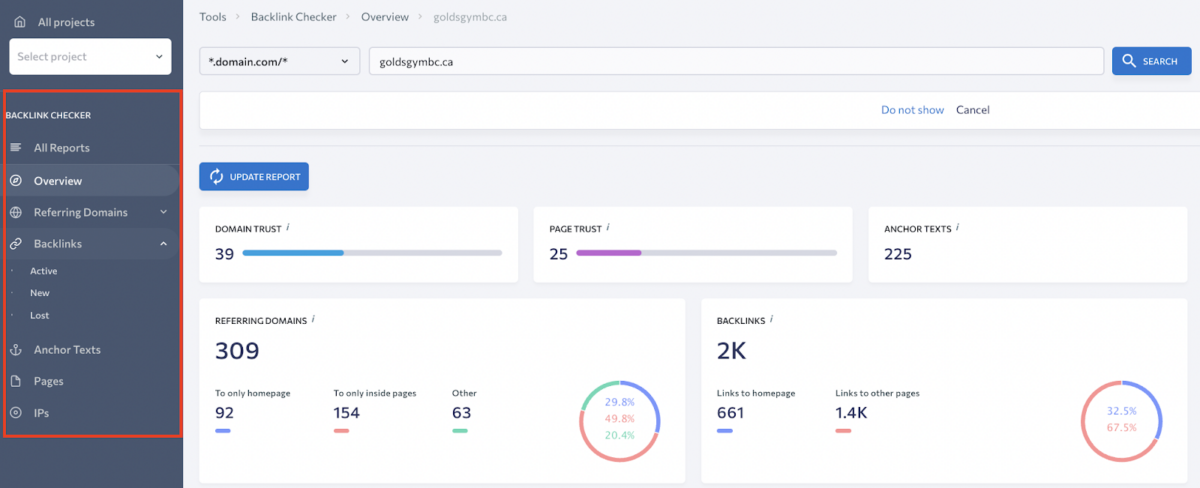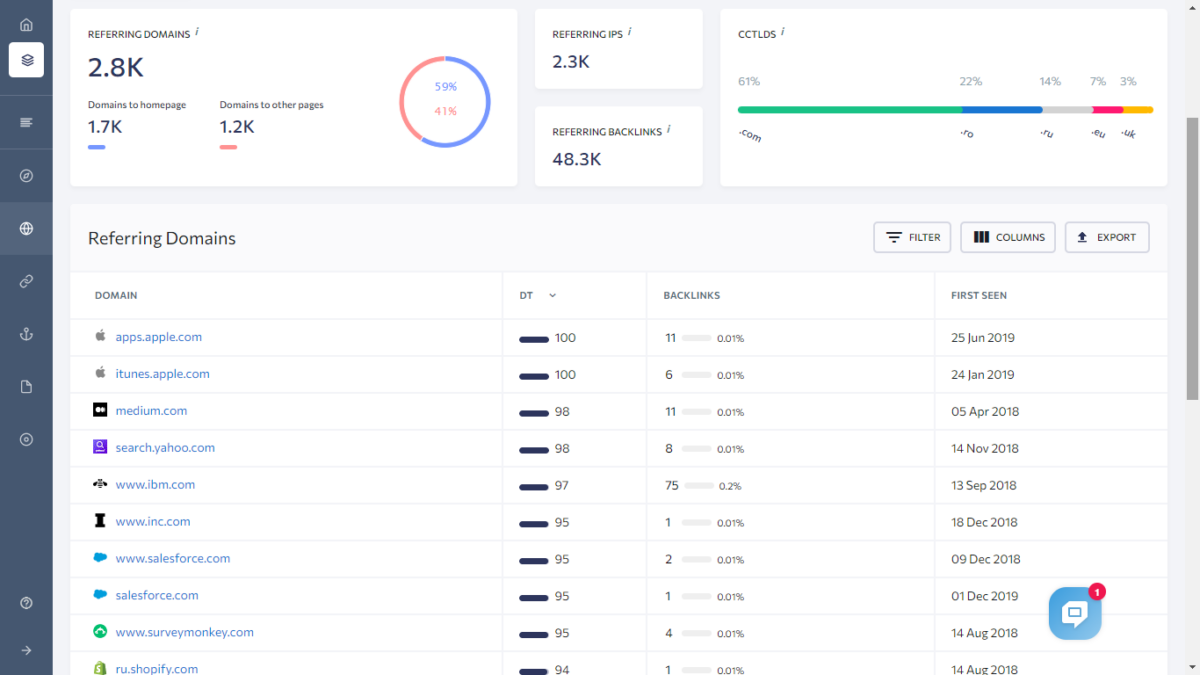Everyone familiar with SEO knows the value of link building. Most marketers also know that social media is one of the most effective channels for communication and building a relationship between a brand and its audience.
But not all of these specialists realize the two can work together. Social backlinks are not too difficult to acquire.
Not to mention that a wise usage of SNS (social networking services, i.e. social media) provides many benefits for businesses.
In this guide, we’ll refresh your memory on the topic of link building, give an overview of the value of social media in off-page SEO, and discuss some of the best strategies to try.
Post Contents
What Is Link Building?
Link building is a set of actions and processes aimed at acquiring references to the pages of your website on other relevant sources.

Simply put, you work on encouraging other websites to put a link to your website on their pages.
Each reference works by vouching for your authority and credibility. So, the more relevant, quality vouching you get, the more trustworthy your brand is considered both by search engines and your target audience. Hence a higher ranking, and more traffic, leads, and sales.
The highest results on Google have 3.8 times more backlinks than the lower ones. There must be a correlation there.
In fact, Backlinko has compiled a whole group of backlink-related factors that, to some degree, influence the ranking of your website on the search engine.
In the early days of the never-ending race for the first place in the SERPs, you could post a link to your site anywhere, gain a couple thousands of mentions, and probably hit the ceiling. However, along with the algorithm advances, the quality, authority, and relevance of each link have become top priority.
Therefore, businesses promoting online have begun to take care of their backlink profiles to make sure they are clean and healthy.
The perfect-case scenario for getting a quality backlink is:
Building a reputation >>> creating original, valuable content >>> getting noticed by a reputable website in the niche >>> get a backlink from them as an expert
Of course, there are other ways to do it, including guest posting, creating and promoting infographics, pitching your brand for TOP articles, leaving your data in local directories, social media, etc.
So, how do you analyze backlinks to find out their value?
Find a reliable backlink tool like the backlink analyzer by SE Ranking, enter a domain for analysis there, receive the data on your backlink profile or that of a competitor, and examine which backlinks you already have and which ones you need to get.

All you have to do is insert the website address you want to spy on and choose the type (domain with or without subdomains or the exact URL). After clicking the Search button, you’ll see the following data:
- Domain trust
- Page trust
- Anchor texts
- Backlinks (new and lost)
- Referring domains (new and lost)
- Dofollow/Nofollow ratio, etc.

In the menu on the left, you can choose from:
- Overview (all information is presented in easy-to-understand, informative graphs)
- Referring domains (active, new, and lost)
- Backlinks (active, new, and lost)
- Anchor texts
- Pages
- IPs
Each category will showcase a detailed report with multiple metrics. For example, if you want to research the domains referring to your website, click on Referring Domains > Active.

See the total number of referring domains, the ratio of referrals to the homepage and other pages, ccTLD ratio (country code top-level domains), the total number of referring backlinks, etc.
You will also get access to a table with all active domains. Sort them by name, domain trust, number of backlinks, or the time they were first seen. You can also filter them or export a full list of referring domains or backlinks.
Tip: Check one of your main competitor’s backlink portfolios and compare it to what you already have, and then make a list of domains to get a backlink from.
As of now, we see little connection between link building and social media.
So, let’s find out why social links are so important that we’ve decided to write a whole article about them.
The Valuable Connection Between Backlinks & Social Media
Social backlinks aren’t the core reason why you should create social media profiles and promote them.
The connection is indirect since the backlinks you get on social media are nofollow, and as such, they are recognized by search engines as links that you can create yourself–so they aren’t considered as a ranking factor. But they aren’t useless, of course.
For businesses, social media platforms are all about building relationships with buyer and partner prospects, standing out, promoting products and services, creating supporting content to prove expertise, etc.
It’s not like writing and sending pitches where you try to get a backlink from an authoritative website to improve your own website’s rankings. It’s more like a conversation with opportunities.
Use social media to:
- Build your brand
- Research competition and potential allies
- Build a dialogue with your target audience
- Prospect links
- Gather content ideas
- Promote your products, services, website pages, blog posts, visuals, etc.
Imagine how many quality backlinks you’re going to have by building relationships with people and creating a positive reputation on SNS.
Then, compare it to the time and effort you’d have to put into getting the same number of links through cold pitches.
We aren’t saying social media link building is THE only best solution, but why not use all the instruments there are online?
Social Media Link Building: The Best Strategies To Try
Prepare to either create SNS accounts and set them up or adjust what you already have for link-building purposes. Here, we have 7 approaches you should try.
Adjusting Personal Profiles
To link social media (for example, Facebook) to your persona or brand, put a link(s) to your website in:
- Contact
- Basic Info
- About section
- Relevant text posts on your wall
- Relevant media (images, videos) on your wall
- Your group’s pinned post (if you have one)
Set the About and other sections where you have the link to Public so that everyone can see it. Then, see if any of your other social profiles need the same adjustments.
Why do this? You’re making a statement and promoting your website and content this way, which may lead to more backlinks.
Gathering Customer Reviews
Customer reviews are by far the best social proof a business can get online. When you keep in touch with your customers and reply to their reviews, it garners trust, boosts engagement, and shows that you care.
So, don’t hesitate to reach out to your buyers and ask for a short comment about the product, service, and/or client experience. It makes sense to reward them with a discount or a free gift for their next purchase.
Why do this? Reviews may help you rank higher for new or existing keywords connected with your brand.
Your social media accounts may get better rankings this way, improving your brand awareness, which will draw even more people. Besides, the conversion will become much easier as you build trust for the brand.
Outreach
Twitter and LinkedIn are some of the best social media platforms for outreach. We’re used to emailing and calling people for networking and gaining benefits, but this is a much faster way.
Set up a Twitter account and find influencers you think may help you get coverage. They should be people with a large following and related to your niche.
Many if not most of them read replies and check mentions from time to time.
Reply to several of their tweets and show interest. Then, casually pitch your content to them (a study, statistics you’ve found out, a review, etc.) Chances are you’ll get a reply and even more.
Same with LinkedIn. Connect, comment, pitch, and use your professional, wisely built profile as an asset.
Why do this? You’re basically networking, reaching out to people with influence who may get you some attention in the niche.
Tracking Mentions
If someone mentions you on social media and expresses interest in your content or brand, seize the opportunity. Reaching out to that person and asking them for a backlink or a repost will do.
Why do this? You save effort by using this approach. The person willingly expressed interest, so all you have to do is ask nicely.
Mentioning Influencers and Brands
When joining social media, choose influencers and brands you may benefit from.
They should be in the same niche, have an active following, and be open for communication. You can do this by researching the SNS itself or by using third-party services like BuzzSumo.

Insert the focus keyword, and you’ll see the most shared content. There, you can find not only influencers to target but content ideas as well.
As you identify your backlink prospects, try to build a relationship. Follow, like, comment, reply to tweets and Instagram stories, and share their content on Facebook.
Why do this? Your goal is to be visible to the target influencer so that when you pitch your brand or article to them, they already know you and have a positive association since you’ve shown attention to their persona and what they do.
Promoting Your Events
Social media event promotion is more than a call to action in a Facebook post. Your strategy has to ensure you’re engaging with your audience before, during, and after the event. Here are some ideas:
- Countdown button in Instagram Stories as a reminder
- An active event page on Facebook with all the timely updates
- Teasers (video, images, blurred photos, text attention hooks, etc.)
- Create a hashtag (works for all platforms)
- Show some BTS (behind the scenes)
- Live tweet during the event to engage the online audience
Why do this? This approach boosts engagement, which makes people talk more about you. Consequently, you get more mentions, shares, and backlinks.
Using Tricks To Boost Shares
To gain more shares, presenting useful information isn’t enough nowadays. So, here’s a list of additional elements you can use:
- Infographics
- Video content
- Memes
- GIFs
- Catchy introductions and descriptions
Be witty and even funny if it’s applicable to your branding. Don’t forget to apply some certified tools to help you accomplish this task.
You can use desktop software like Shotcut and Movavi to make great videos or online tools like Visme and Canva to design presentations, create infographics and more.
Why do this? People share not only useful expert info but something creative as well. Showcasing statistics as an infographic will make it more likely for you to get more backlinks as its initial creator.
Summary
Yes, the connection between social media and link building is indirect. But when you get the idea that using SNS for networking will help you gather links easily in the future, your backlink profile will change for the better.
Make connections, be social, reply to influencers, set up gorgeous profiles with links to your content, collect reviews, and ask customers to help.
Soon enough, this will become an integral part of your successful link-building strategy.






























